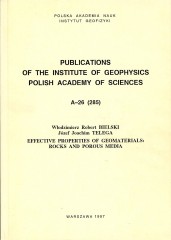- A - Physics of the Earth's Interior
- B - Seismology
-
C - Geomagnetism
C-119, C-118, C-117, C-116, C-115, C-114, C-113, C-112, C-111, C-110, C-109, C-108, C-107, C-106, C-105, C-104, C-103, C-102, C-101, C-100, C-99, C-98, C-97, C-96, C-95, C-94, C-93, C-92, C-91, C-90, C-89, C-88, C-87, C-86, C-85, C-84, C-83, C-82, C-81, C-80, C-79, C-78, C-77, C-76, C-75, C-74, C-73, C-72, C-71, C-70, C-69, C-68, C-67, C-66, C-65, C-64, C-63, C-62, C-61, C-60, C-59, C-58, C-57, C-56, C-55, C-54, C-53, C-52, C-51, C-50, C-49, C-48, C-47, C-46, C-45, C-44, C-43, C-42, C-41, C-40, C-39, C-38, C-37, C-36, C-35, C-33, C-32, C-31, C-30, C-29, C-28, C-27, C-26, C-25, C-24, C-23, C-22, C-21, C-20, C-19, C-18, C-17, C-16, C-15, C-14, C-13, C-12, C-11, C-10, C-9, C-8, C-7, C-6, C-5, C-4, C-3, C-2, C-1
-
D - Physics of the Atmosphere
D-79, D-78, D-77, D-76, D-75, D-74, D-73, D-72, D-71, D-70, D-69, D-68, D-67, D-66, D-65, D-64, D-63, D-62, D-61, D-60, D-59, D-58, D-57, D-56, D-55, D-54, D-53, D-52, D-51, D-50, D-49, D-48, D-47, D-46, D-44, D-45, D-43, D-42, D-41, D-40, D-39, D-38, D-37, D-35, D-34, D-33, D-32, D-31, D-30, D-28, D-27, D-26, D-25, D-24, D-23, D-22, D-21, D-20, D-19, D-18, D-17, D-16, D-15, D-14, D-13, D-12, D-11, D-10, D-9, D-8, D-7, D-6, D-5, D-4, D-3, D-2, D-1
- E - Hydrology
- P - Polar Research
- M - Miscellanea
-
Online First
Effective Properties of Geomaterials: Rocks and Porous Media
Volume: 285
Series: A-26
This comprehensive survey consists of two parts. In Part I we present the available results concerning the effective properties of cracked materials, mainly rocks. The second part of the paper deals with the transport and effective properties of porous materials in the case of a rigid and deformable skeleton. The whole paper is oriented towards applications in geophysics and geomechanics. Thus, much attention has been devoted to two-phased media, which model the upper crust of the Earth. Such media may be either isotropic or anisotropic cracked elastic bodies, though their behaviour can also exhibit inelastic features. Porous media may be dry, saturated or partially saturated. One-phase and multi-phase flows through porous media have been considered.
CONTENTS
Preface, ...4
Part I. Cracked Media, ...5
1. Introduction, ...5
2. Self consistent approach, ...6
3. The scattering method, ...13
4. Layered media, ...20
5. Two-scaled asymptotic expansion method, ...24
6. The method of Γ-convergence, ...31
7. Differential effective scheme, ...33
8. Visco-elastic moduli, ...38
9. Wave propgation, ...40
Part II. Porous Media and Averaging, ...48
10. Flow of Stokes fluid through a rigid skeleton. Influence of scaling, ...48
10.1 Darcy's law and homogenization of the Stokes equations, ...48
10.2 Formulation of the Stokes problem in the domain Ωε, ...51
10.3 Other cases of the homogenization of the Stokes equations, ...57
11. Homogenization of the Stokes equations with a slip interface condition, ...61
11.1 Skeleton of Section 10.1, ...62
11.2 Different scalings of rigid particles, ...62
12. Homogenization of nonstationary Stokes equations: influence of scaling, ...64
13. Flow of two immiscible fluids through a porous medium, ...71
14. Factured porous media: double periodicity and double porosity models, ...75
14.1 Stationary flow: double periodicity model, ...76
14.2 Transient flow: double porosity model, ...78
14.2.1 A single component in a single phase, ...80
14.2.2 Incompressible miscible displacement, ...83
14.3 Incompressible, immiscible displacement in a reservoir with moderate-sized matrix blocks, ...86
14.4 Incompressible, immiscible displacement in a reservoir with large matrix blocks, ...89
15. Deformable skeleton, ...91
15.1 Saturated porous elastic media, ...92
16. Visualization of multiphase flows: photoluminescent volumetric imaging, ...96
16.1 Comments on other measurements techniques, ...100
Final remarks and bibliographical comments, ...102
Bibliography, ...104


